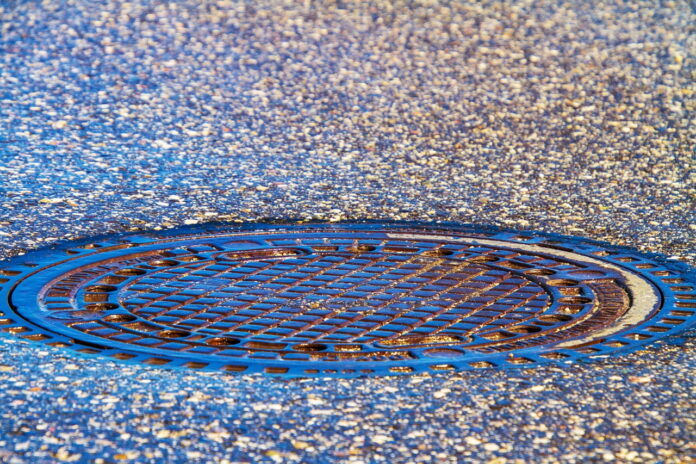The quest for sustainable living has led to the emergence of green technologies in various sectors, including sewage treatment. These technologies aim to minimize environmental impact while maximizing efficiency in water purification processes. Sewage treatment plants (STPs) are at the forefront of this revolution, adopting innovative methods to treat wastewater in an eco-friendly manner. The integration of green technologies in STPs is not just a trend; it’s a necessity to ensure the availability of clean water for future generations while reducing the carbon footprint of water management.
The concept of green technology in sewage treatment encompasses a range of practices, from reducing energy consumption and chemical use to recovering resources embedded in wastewater. These practices are designed to align with the principles of sustainability, resilience, and circular economy. By leveraging advanced biological processes, innovative filtration methods, and renewable energy sources, modern STPs are transforming the way we think about and manage wastewater.
Advanced Biological Treatment Processes for Wastewater
Biological treatment processes are the heart of many sewage treatment plants, utilizing microorganisms to break down organic matter in wastewater. However, advanced biological treatment technologies have taken this a step further by enhancing the efficiency and reducing the environmental impact of these processes. One such technology is the Membrane Bioreactor (MBR), which combines conventional biological treatment with membrane filtration to achieve high-quality effluent suitable for reuse.
Another innovative approach is the use of Anammox bacteria for nitrogen removal. This process significantly reduces the energy required for aeration and the production of excess sludge, compared to traditional nitrification-denitrification methods. Additionally, the implementation of constructed wetlands serves as a natural treatment system, harnessing the symbiotic relationships between plants and microorganisms to purify wastewater while creating valuable habitats for wildlife.
Innovative Filtration and Membrane Technologies for Water Purification
Filtration and membrane technologies are pivotal in the modernization of sewage treatment plants. These methods provide a physical barrier that can remove a wide range of contaminants, including pathogens, heavy metals, and microplastics. Ultrafiltration (UF) and reverse osmosis (RO) are two prominent examples that deliver high-quality water suitable for various reuse applications.
The development of nanotechnology has also contributed to the advancement of filtration methods. Nanofiltration membranes can target specific pollutants with precision, offering a tailored approach to water purification. Moreover, the advent of biomimetic membranes, inspired by natural processes, promises to enhance the efficiency and selectivity of filtration while reducing energy consumption.
Harnessing Renewable Energy for Sustainable Sewage Treatment Operations
Sustainable sewage treatment operations are increasingly turning to renewable energy sources to power their processes. Solar and wind energy are becoming common sights at STPs, providing a clean and cost-effective power supply. Additionally, biogas production through anaerobic digestion of sludge represents a dual benefit: it reduces waste volume and generates energy.
The integration of these renewable energy systems not only reduces the carbon footprint of sewage treatment plants but also leads to significant cost savings over time. Some facilities have achieved net-zero energy consumption, becoming energy-neutral or even energy-positive by producing more energy than they consume. This shift towards renewable energy is a critical component of green technology adoption in the wastewater sector.
Water Reuse Strategies: Closing the Loop on Wastewater
Water reuse is a cornerstone of sustainable water management, and modern STPs are equipped to close the loop on wastewater. Treated effluent can be repurposed for irrigation, industrial processes, and even indirect potable use, conserving freshwater resources and reducing the strain on natural ecosystems. The implementation of rigorous treatment and monitoring ensures that reclaimed water meets strict quality standards for its intended use.
Public acceptance is crucial for the success of water reuse programs, and education plays a vital role in this regard. Demonstrating the safety and benefits of reclaimed water can lead to wider acceptance and adoption. Additionally, the development of decentralized treatment systems can localize water reuse efforts, reducing the need for extensive distribution infrastructure and further minimizing the environmental impact.
The Future of Sewage Treatment: Integrating Green Tech for Environmental and Economic Benefits
The future of sewage treatment is inextricably linked with the integration of green technologies. These innovations not only provide environmental benefits but also offer economic advantages through resource recovery and energy savings. The potential for extracting nutrients like phosphorus and nitrogen from wastewater presents an opportunity for creating a circular economy, where waste is transformed into valuable products.
As we look ahead, the continued advancement and adoption of green technologies in sewage treatment will be driven by policy, public awareness, and technological breakthroughs. The integration of smart systems and artificial intelligence could further optimize operations, leading to even greater efficiencies. The challenge lies in scaling these technologies and making them accessible to communities worldwide, ensuring that the benefits of green sewage treatment are shared by all.
Green technologies in sewage treatment represent a paradigm shift towards a more sustainable and resource-efficient approach to water management. By embracing these innovations, we can protect our water resources, reduce our environmental footprint, and pave the way for a cleaner, more sustainable future.
